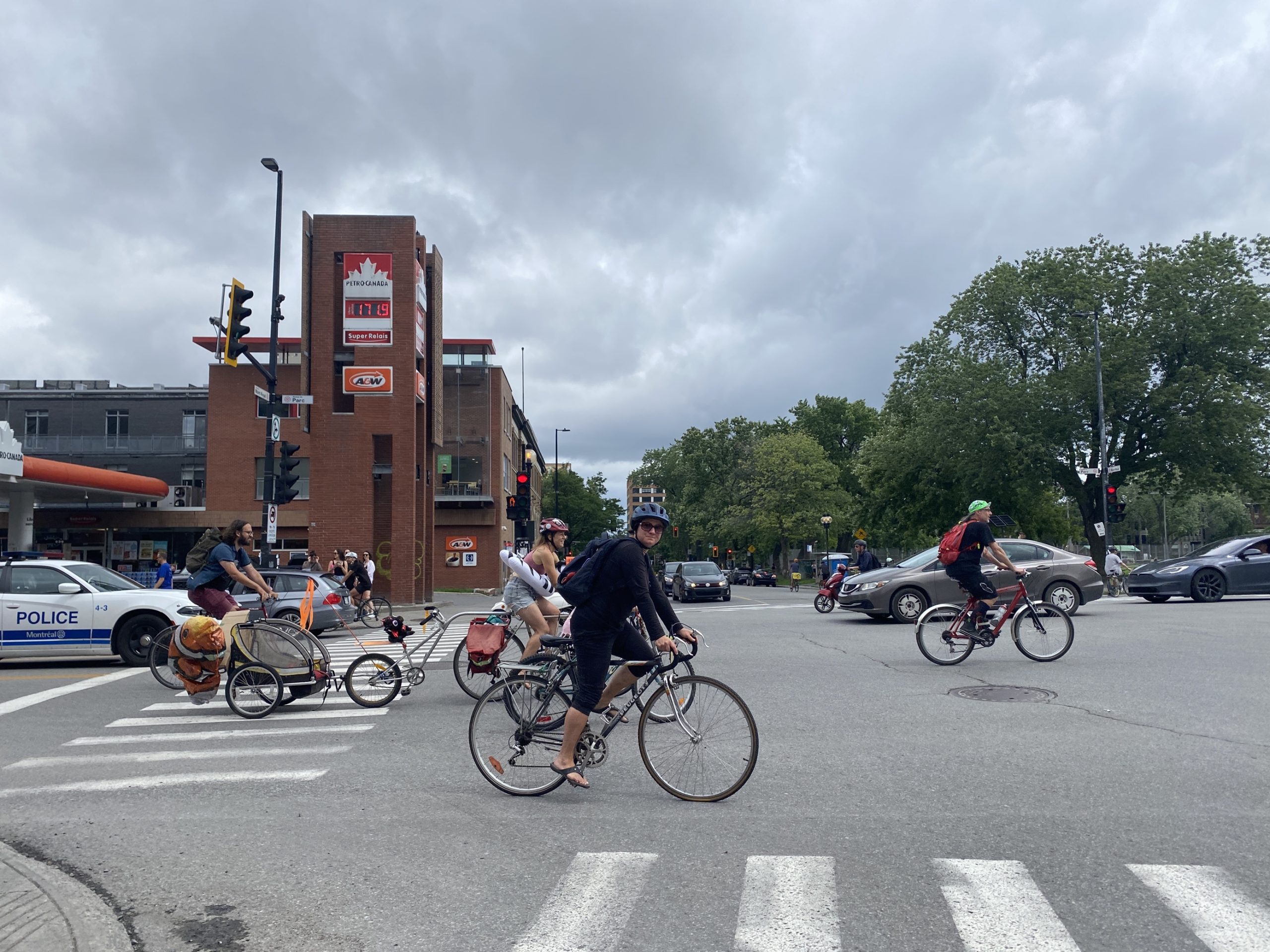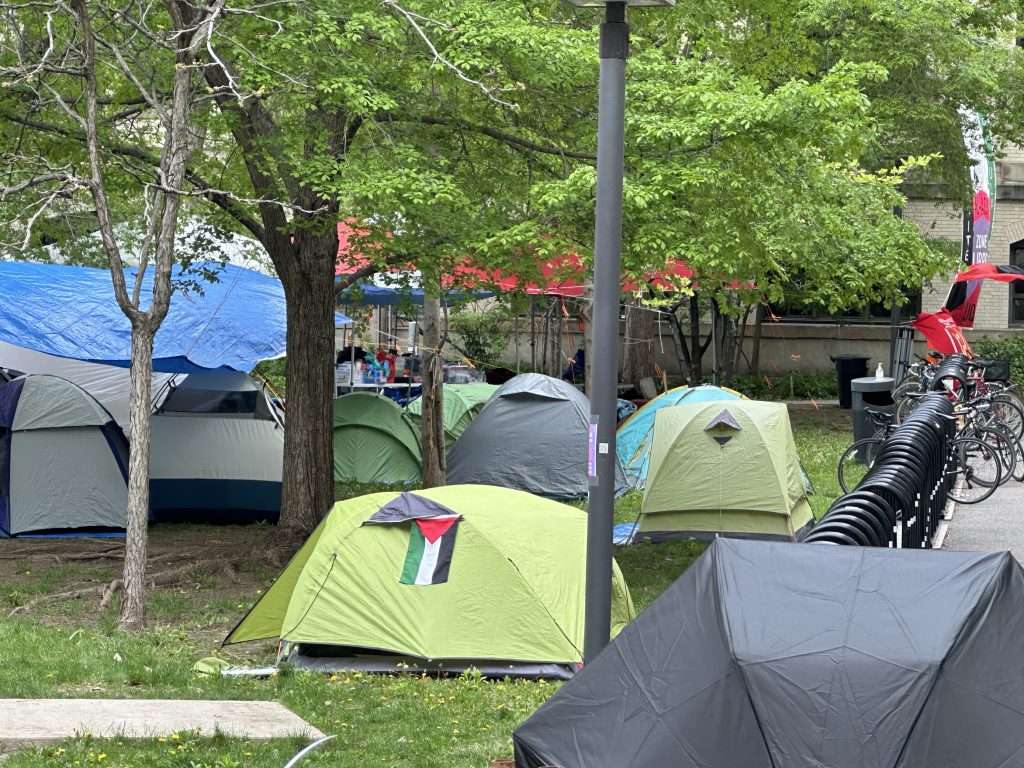Protesters form ‘human bike lane’ on Park Avenue, demanding better safety for cyclists
Posted July 22, 2023 1:57 pm.
Last Updated July 22, 2023 6:48 pm.
A collective of bicycle safety advocates is demanding the City of Montreal implement measures to make Park Avenue safer for cyclists and pedestrians.
The organization Vélo fantôme Québec says city officials are ignoring safety risks along the artery that connects downtown Montreal to Parc-Ex.
A protest on Park Avenue Saturday – which coincided with Vélo fantôme Québec’s 10-year anniversary – saw cyclists form a “human bike lane” on Park between Mont-Royal Avenue and Saint-Viateur Street.
“I think there’s a movement happening right now,” said cyclist Samuel Vermette. “A lot of people, more and more people are asking for more protected bike lines so it’s easier to go everywhere in Montreal by bike.
“It’s a solution to so many problems, whether it’s congestion, whether it’s environmental crisis, whether it’s road safety. Demanding for more bike lanes is super important.
“We don’t own a car and we bike 365 days a year. We do winter biking.”

Cyclists on Park Avenue on July 22, 2023, as part of a protest organized by Vélo fantôme Québec. (Brittany Henriques/CityNews)
The protest also acted as a commemoration for cyclists who have lost their lives on Montreal’s streets in the past decade.
“All the people agree that there should be a bike lane here and that was 12 years ago and the fact that the city doesn’t have it in its plan, for me it doesn’t make sense,” said cyclist Julie Labelle-Patenaude.
RELATED: Parc-Extension residents divided about proposed redesign of bike lanes
Vélo fantôme Québec installs white bikes in the city to honour cyclists killed on the road. The first white bike installed on Park Avenue was to honour Suzanne Châtelain, who died in July 2013.
“In 2021 we also installed a ghost bike at the corner of Park and Mount Royal,” said Séverine Le Page, a co-spokesperson with Vélo fantôme Québec. “This same street has seen two ghost bikes memorials that we’ve installed. There’s been another cyclist who died further down but the family didn’t want a memorial. And there’s been countless pedestrians that have died as well.”
Le Page says the city should prioritize bike lanes because there are more cyclists every year.
“We forget that there isn’t an equitable balance of space allotted to vehicles in the city,” said Le Page. “Seventy-eight per cent of the road is dedicated only to cars and you have 1.3 per cent – depending on the neighbourhood – dedicated to bike lanes. And that’s a very small amount given that we have a growing number of people using other means of mobility as a means to get around the city.
“We should take into account that not everybody owns a car and not everybody should have to be in a car so we can give more space to everyone and of course vulnerable users first – so that’s cyclists and those on foot as well.”



